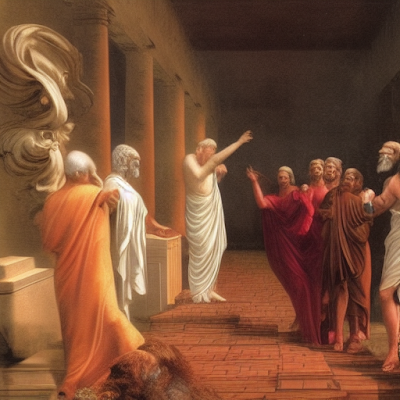The Evolution of Ancient Rome Religious Beliefs and Traditions
The Evolution of Ancient Rome's Religious Beliefs and Traditions - Ancient Rome is often known for its grandeur and accomplishments in areas such as engineering, law, and military conquest. However, the religious beliefs and traditions of Rome are often overlooked despite their profound influence on the society and its development. Rome's religion evolved over time, and it is fascinating to explore its history.
The earliest form of religion in Rome was animism, which is the belief in spirits in natural objects such as rocks and trees. These spirits were known as "numina," and the people of Rome believed that they controlled everything from the weather to the harvest. This animistic religion was polytheistic and eventually evolved into a pantheon of gods.
As Rome grew in power, it began to adopt religious beliefs from other civilizations. Greek religion had a significant influence on Rome, and many of the gods and goddesses were imported from the Greeks. The Roman gods and goddesses were often given different names and attributes, but their roles and functions remained the same. For example, the Greek god Zeus became the Roman god Jupiter, and the Greek goddess Aphrodite became the Roman goddess Venus.
Over time, the Roman pantheon grew to include hundreds of gods and goddesses. Each deity had a specific area of influence, such as Mars, the god of war, or Neptune, the god of the sea. In addition to these gods and goddesses, Rome also had a system of spirits and ghosts that were believed to inhabit the world.
One of the most significant developments in Roman religion was the establishment of a state religion. In 312 BCE, Emperor Constantine issued the Edict of Milan, which granted religious freedom to all people in the Roman Empire. However, by 380 CE, Emperor Theodosius made Christianity the official religion of the empire. This decision had a profound impact on the religious landscape of Rome, as it paved the way for the eventual decline of traditional Roman religion.
Before Christianity became the official religion of Rome, it had already begun to gain popularity. The rise of Christianity was due, in part, to the decline in the traditional Roman religion. Many Romans had lost faith in the old gods, and they were searching for a new religion that provided them with a sense of purpose and meaning. Christianity offered them that sense of purpose, and it quickly spread throughout the empire.
The spread of Christianity was not without resistance. Many traditionalists saw Christianity as a threat to their way of life and to the stability of the empire. As a result, they persecuted Christians and tried to suppress the religion. However, these efforts only served to make Christianity more popular, as many people were drawn to the religion's message of hope and salvation.
By the end of the 4th century CE, Christianity had become the dominant religion in Rome. The old gods and goddesses were largely forgotten, and the traditional Roman religion had faded into obscurity. However, some aspects of the old religion continued to influence Roman culture and society.
One example of this influence can be seen in the holiday of Christmas. The holiday has its roots in the Roman festival of Saturnalia, which was a celebration of the god Saturn. During the festival, people would exchange gifts, decorate their homes, and feast. When Christianity became the official religion of Rome, many of the traditions of Saturnalia were adopted and incorporated into the celebration of Christmas.
Another example of the influence of the old religion can be seen in the architecture of Rome. Many of the city's most famous buildings, such as the Colosseum and the Pantheon, were originally built as temples to the old gods. When Christianity became the dominant religion, many of these temples were converted into churches. However, the buildings themselves were largely left intact, and they continue to serve as a reminder of Rome's religious past.
In conclusion, the evolution of ancient Rome's religious beliefs and traditions was a long and complex process that spanned centuries. The early animistic religion evolved into a polytheistic pantheon of gods and goddesses, which was later influenced by the Greek religion. Eventually, Christianity became the dominant religion in Rome, and the traditional Roman religion faded into obscurity.
Despite the decline of the traditional Roman religion, its influence can still be seen in many aspects of Roman culture and society. The holiday of Christmas, for example, has its roots in the Roman festival of Saturnalia, and many of Rome's most famous buildings were originally built as temples to the old gods.
Overall, the evolution of Rome's religious beliefs and traditions is a testament to the city's adaptability and openness to change. While the traditional religion may have faded away, its influence can still be seen today, and it continues to shape the culture and identity of the city of Rome.


Comments
Post a Comment